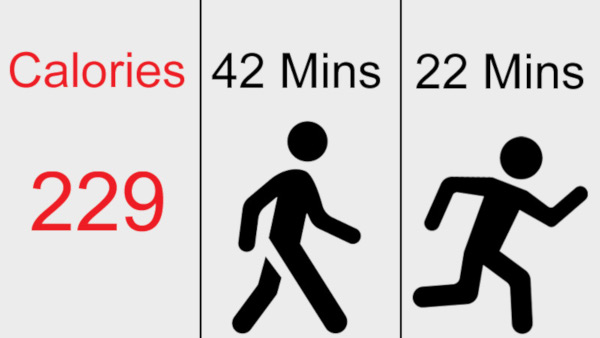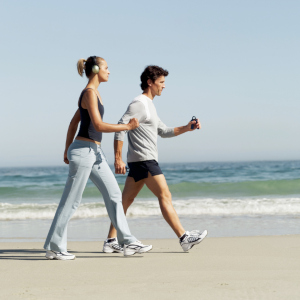If your small Milk Chocolate Bar had a label on it that warned it would take about 42 minutes of walking or 22 minutes of running to burn off its 229 Calories, would you still buy it? British researchers found folks thought twice before choosing foods with long, hard burn-off times…
 This PACE label may appear on food products and restaurant menus soon…
This PACE label may appear on food products and restaurant menus soon…
According to a new study report in the latest edition of Journal of Epidemiology & Community Health, simply labelling foods with the amount of effort needed to burn of the calories they represent can help people cut down their calorie intake significantly and choose healthier foods.
What they did
Researchers data mined 14 different studies from different regions to determine the effects of what’s known as PACE (Physical Activity Calorie Equivalent or Expenditure) labelling on food buyers.
PACE labeling adds information to food labels that indicate how much exercise would be needed to burn off the calories of the food within. According to an abstract of the report, “The researchers trawled research databases and other relevant online resources for studies that compared PACE labelling with other types of food labelling or none for potential impact on the selection, purchase, or consumption of food and drinks (excluding alcohol).”
What they found
When PACE labelling was displayed on food and drink items and on menus (along with the usual label information), significantly fewer calories – 65 fewer per meal – were selected on average. PACE labelling was also associated with the consumption of 80 to 100 fewer calories than no food labelling, or other types of labelling.
Researchers say that translates to as much as as a 200 Calorie reduction per diner per day.
The takeaway
Other studies have shown that even a reduction of as little as 100 Calories per day combined with a sustained increase in physical activity could help fight obesity.
“PACE labelling is a simple strategy that could be easily included on food/beverage packaging by manufacturers, on shelving price labels in supermarkets, and/or in menus in restaurants/fast-food outlets,” the report states. “Public health agencies may want to consider the possibility of including policies to promote [it] as a strategy that contributes to the prevention and treatment of obesity and related diseases.”
My take
I can attest to the effectiveness of the regime the other study recommended: Reducing intake by 100 Calories or more a day and adding regular physical activity to one’s routine for weight reduction. A few years back, I dropped 60 lb. / 130 kg in 6 months doing just that – went from a size 18 to a size 12. And I simply walked for an hour each morning for my exercise.
I also found that I ate less and enjoyed it more after starting the new regime, which helped maintain my Calorie reduction ‘promise’.
I won’t call in Dr. Obvious on this one, but I can say that I have what intelligence operatives call ‘extremely high confidence’ in the verity of the new report’s findings!
~ Maggie J.

